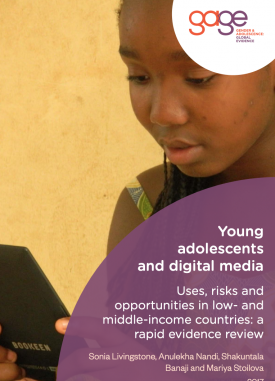In development agendas regarding children in low-income communities, both older and emerging media are typically ignored or assumed to have beneficial powers that will redress social and gender inequality. This article builds on a recent rapid evidence review on adolescents’ digital media use and development interventions in low- and middle-income countries to examine the contexts of children and adolescents’ access to, and uses of, information and communication technology (ICT). Noting that only a handful of studies heed the significance of social class and gender as major axes of inequality for adolescents, the article scrutinises the gap between the rhetoric of ICT-based empowerment and the realities of ICT-based practice. It calls for a radical rethinking of childhood and development in light of the actual experiences, struggles, and contexts.
Suggested citation
Banaji, S., Livingstone, S., Nandi, A. and Stoilova, M. (2018) ‘Instrumentalising the digital: adolescents’ engagement with ICTs in low- and middle-income countries.’ Development in Practice, 28(3), pp. 432–443. (https://doi.org/10.1080/09614524.2018.1438366)
